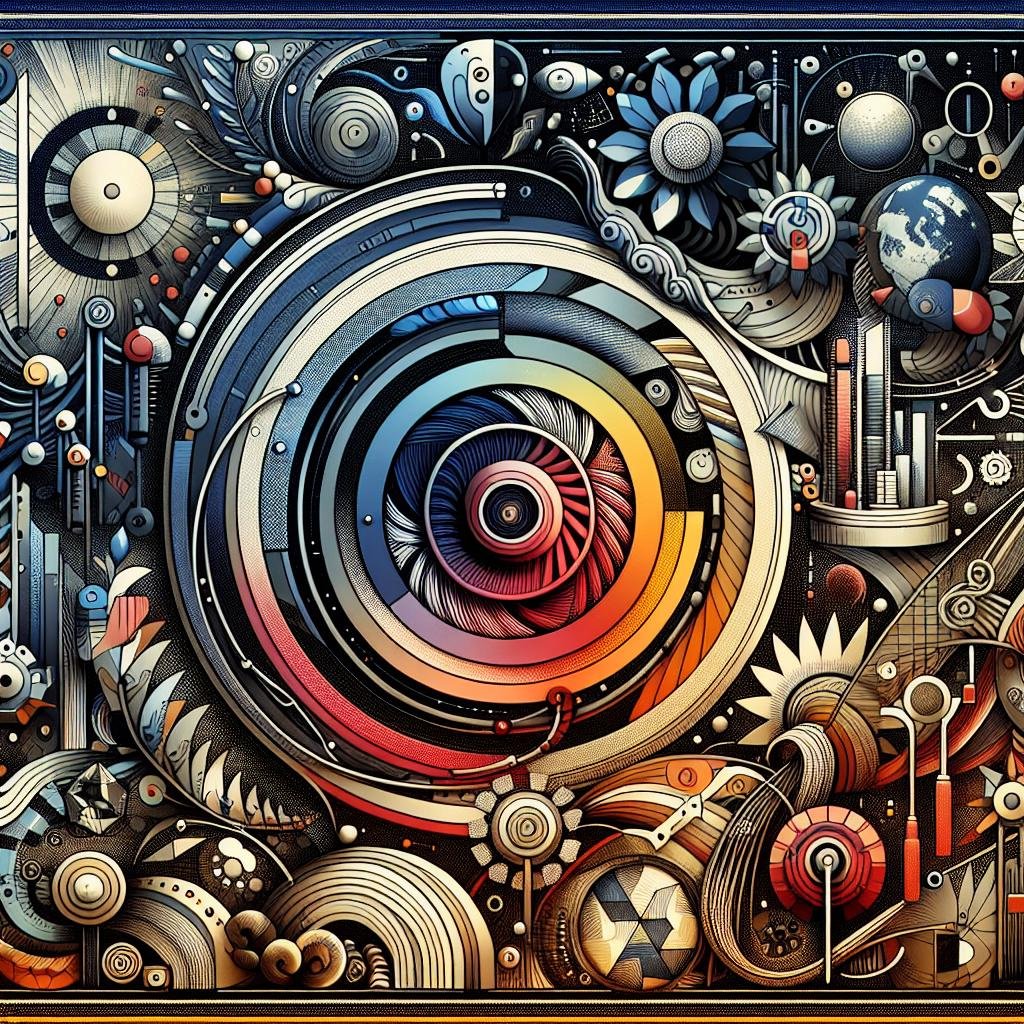In teh wondrous world of 3D printing, where imagination takes shape, the choice of filament is akin to selecting the perfect paintbrush for a masterpiece. whether you’re crafting intricate models or robust functional parts, the filament you choose is your secret ally in bringing your visions to life. With a bewildering array of options available, from vibrant PLA to durable ABS and exotic blends, how do you steer your ship through this ocean of possibilities? Fear not, for this guide will equip you with the compass and map you need. Join us as we explore the essential qualities that turn filament from mere thread to the fabric of your creation,ensuring every layer you print is a testament to detail,durability,and excellence.
Material Matters Understanding PLA ABS and Other Filament Types
Choosing the right 3D printing filament can feel a bit like diving into a candy store with diverse flavors. Two of the most common materials, PLA and ABS, each have their own unique set of characteristics that cater to different needs. PLA is cherished for its earth-friendliness and ease of use, making it a fantastic option for beginners. meanwhile, ABS stands firm with its robust durability, ideal for those creating functional prototypes. When exploring other types of filaments, such as PETG or TPU, you’re unlocking a world of flexibility, openness, and strength.
- PLA: Biodegradable, low-warping, easy to print
- ABS: Strong, heat-resistant, but requires a heated bed
- PETG: Obvious, stronger than PLA, slightly flexible
- TPU: Highly flexible and elastic, ideal for soft, rubber-like items
It’s also essential to consider factors like diameter consistency and color vibrancy when selecting a filament. High-quality filaments feature a consistent diameter, ensuring smoother layers and less jamming. Additionally, look for brands that offer vivid colors and multiple finishes to make your creations pop. For a quick comparison, here’s a handy reference:
| Filament | pros | Cons |
|---|---|---|
| PLA | Eco-friendly, easy to print | Brittle, low melting point |
| ABS | Durable, heat-resistant | Fumes, requires heated bed |
| PETG | Strong, flexible | Slight enclaves |
| TPU | Highly flexible | Requires slower print speeds |

Dimensional Delights ensuring Diameter Consistency and Tolerance
When it comes to 3D printing, even the slightest discrepancies in filament dimensions can lead to meaningful inconsistencies in your projects.Ensuring the filament maintains a consistent diameter within specified tolerances is crucial for achieving precise results every time. This characteristic is not merely about numbers but is pivotal in facilitating smoother extrusion through the printer’s nozzle,thereby minimizing jams and obtrusions. Filament that adheres to stringent diameter tolerances typically allows for a more uniform flow rate, enhancing the quality of intricate details in your designs. With this in mind, selecting filament with precise dimensions is akin to investing in the craftsmanship of your creative ideas.
For an astute choice, consider these key factors:
- Diameter Precision: Opt for filaments with a tight diameter variance, ideally within ±0.02mm.
- Consistency Across Length: The entire spool should maintain the same diameter throughout.
- Material Ingredients: High-grade raw materials lend better stability and reduction in dimensional fluctuations.
- Manufacturer’s Claims: Trust those brands that transparently detail their tolerance tests.
Here’s a quick overview of how tolerance accuracy can impact your print:
| Feature | Impact on Quality |
|---|---|
| Precision Tolerances | Enhanced detail and reduced layer misalignments |
| Uniform Extrusion | Smoother surfaces, less post-processing work |
| Stable Print Dynamics | Minimized clogging, consistent printing speed |

Colorful Creations Tips for Choosing Vibrant and Stable Hues
When selecting the perfect filament, distinguishing between vibrant and stable colors is essential for achieving those standout, durable prints. Start by prioritizing filament brands known for their color consistency—these manufacturers often have rigorous quality control processes that ensure each spool is a faithful representation of the labeled hue. Look for pigments encapsulated in materials that resist fading and discoloration over time. UV-resistant filaments, such as, are especially valuable for outdoor projects or items exposed to sunlight. Consider testing samples before committing to a large purchase, as this can reveal a filament’s true color integrity when printed under your specific conditions.
For an optimal outcome, here are some attributes to consider:
- Opacity: Choose filaments with solid pigmentation for bold colors.
- Temperature Resistance: Materials should withstand recommended printing temperatures without losing color vibrancy.
- Blend Uniformity: Consistent mixing prevents patchy prints.
| Attribute | Recommended Specification |
|---|---|
| Color Accuracy | ±1% shade variance |
| Fade Resistance | High UV Stability |
| Thermal Stability | -20°C to 70°C guarantee |

Strength and Shine Evaluating Mechanical Properties and Finish Quality
When selecting a high-quality 3D printing filament, it’s essential to focus on the mechanical properties that ensure both strength and flexibility in your prints. Different filaments offer unique characteristics — some are strong yet brittle, while others are more elastic and forgiving. Consider the material’s tensile strength and impact resistance when seeking durable options. Filaments like PLA may offer good strength but are less resistant to impact compared to materials like ABS or PETG. Understanding these nuances helps in achieving desired outcomes, whether you require rigid structures or parts capable of withstanding environmental stressors.
In addition to mechanical properties, the finish quality is crucial for aesthetics and functionality. High-quality filaments exhibit a smooth finish and consistent color, minimizing post-processing efforts. Filaments that provide a glossy finish can enhance your project’s visual appeal, while a matte finish might be preferred for a more subtle look. here are some considerations to ensure a superior finish:
- Filament Diameter Consistency: Ensures smooth feeding and precise layer deposition.
- Color Uniformity: Prevents unsightly streaks and color variation across prints.
- Surface smoothness: Reduces manually needed sanding or smoothing post-print.
| Filament Type | Tensile Strength (MPa) | Finish Quality |
|---|---|---|
| PLA | 60-70 | Glossy |
| ABS | 40-50 | Semi-Matte |
| PETG | 50-60 | Glossy |
Q&A
Q&A: Navigating the World of High-Quality 3D Printing Filament
Q1: Why is choosing the right 3D printing filament significant?
A1: Great question! Think of your 3D printing filament as the magic potion your printer uses to bring your creations to life. Choosing the right one ensures that your designs come out looking as sharp and vibrant as you imagined. High-quality filament can also mean fewer printing issues, saving you time and headaches in the long run.
Q2: What are the key features to consider when selecting a filament?
A2: Ah, the secret checklist! You’ll want to keep an eye out for:
- Material Type: Are you looking for the ease of PLA, the strength of ABS, or the flexibility of TPU? Each material has its own superpower.
- Diameter Consistency: A consistent diameter (usually 1.75mm or 2.85mm) means smoother printing and fewer clogs.
- Color and Finish: From matte to glossy, and every shade in between—your filament choice can drastically affect the final look of your print.
- Tensile Strength and Flexibility: Depending on the project, you might need something sturdy or something that can bend without breaking.
- Temperature Requirements: Make sure your printer can reach the required temperatures for the filament you choose.
Q3: How can one determine if a filament is eco-friendly?
A3: Great inquiry for the eco-conscious creator! Look for filaments that are labeled as biodegradable, such as those made from PLA which is derived from corn starch. Also, check if the manufacturer uses sustainable practices or offers recycling programs for used filament spools.
Q4: How important is the brand when picking 3D printing filament?
A4: While you don’t need to become a brand loyalist, sticking with reputable brands can often mean higher quality and reliability. Top brands have a track record of high manufacturing standards, ensuring each spool you receive is consistent and trustworthy. Plus, they usually have better customer support in case you have questions or issues.
Q5: Are there any tips for testing out a new filament?
A5: absolutely! Here are a few pro tips:
- Print a Small test Object: Before diving into your masterpiece,print something small to see how the filament performs.
- Check the Printer Settings: Adjust the print temperature, speed, and other settings according to the filament’s specifications.
- Watch for Warping or stringing: These issues can be perfect indicators of temperature adjustments needed.
Q6: Can you mix different filaments in a single project?
A6: Mixing materials in a single project can be a fun experiment! Dual-extrusion printers allow you to blend different filament types or colors in one go. Just ensure that the filaments have compatible settings and produce a good bond to avoid weak spots in your print.
Q7: what’s your final piece of advice for someone choosing filament for the first time?
A7: Dive in with an adventurous spirit! Start with a few small projects to get comfortable, and don’t be afraid to experiment with different materials and colors. As you become more familiar with how each filament behaves, you’ll gain the confidence to tackle more complex projects and truly make those ideas in your head come to life!
Wrapping Up
As we wrap up our exploration into the vibrant world of 3D printing filaments, it’s clear that the right material can truly elevate your creations from mere prints to masterpieces. Whether you’re molding the next innovation in tech, crafting bespoke art pieces, or improving household items, choosing a high-quality filament is your first stride toward success. Remember to consider factors like material type, diameter consistency, color vibrancy, and strength as your trusty compass to navigate the endless possibilities the 3D printing realm offers.
In your hands lie the skills and knowledge to transform colorful strands into tangible wonders that defy imagination. So, go ahead and experiment boldly, because with the right filament, the sky isn’t the limit—it’s just the beginning. Happy printing,fellow creators!

